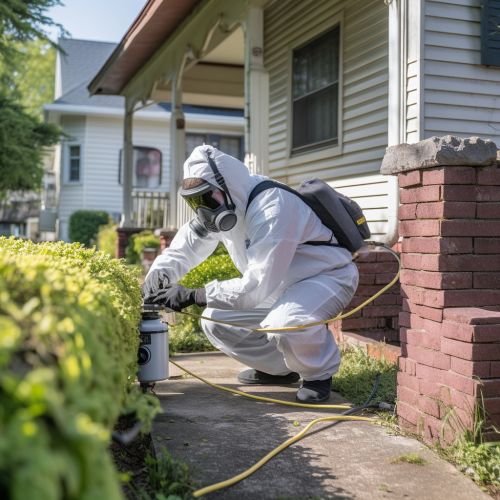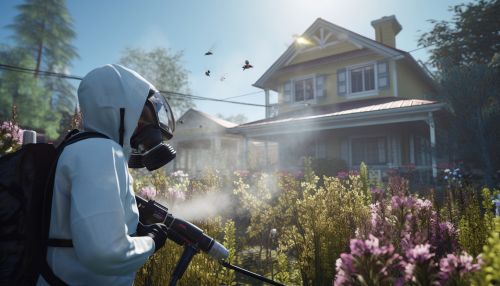Pest Control
Introduction
Pest control refers to the regulation or management of a species defined as a pest, a member of the animal kingdom that impacts adversely on human activities. The human response depends on the importance of the damage done and will range from tolerance, through deterrence and management, to attempts to completely eradicate the pest. Pest control measures may be performed as part of an integrated pest management strategy.
History
In agriculture, pests are kept at bay by cultural, chemical and biological means. Ploughing and cultivation of the soil before sowing mitigate the pest burden and there is a modern trend to limit the use of pesticides as far as possible. This can be achieved by monitoring the crop, only applying insecticides when necessary, and by growing varieties and crops which are resistant to pests. Where possible, biological means are used, encouraging the natural enemies of the pests and introducing suitable predators or parasites.


Types of Pest Control
There are various types of pest control methods, including biological, chemical, and physical pest control. Biological pest control is a method of controlling pests such as insects and mites by using other organisms. It relies on predation, parasitism, herbivory, or other natural mechanisms, but typically also involves an active human management role. Chemical pest control typically involves pesticides and herbicides, which are designed to kill or reduce pests. Physical pest control involves directly removing or killing pests, or making the environment unsuitable for them.
Biological Pest Control
Biological pest control is the control of one through the control and management of natural predators and parasites. For example: mosquitoes are often controlled by putting Bt Bacillus thuringiensis ssp. israelensis, a bacterium that infects and kills mosquito larvae, in local water sources. This treatment has no known side effects to the remaining ecology and is safe for humans to drink. The point of biological pest control, or any natural pest control, is to eliminate a pest with minimal harm to the ecological balance of the environment in its present form.
Chemical Pest Control
Chemical pest control methods are quite often the most cost-effective and the product of choice for home owners. There are many formulations to choose from – sprays, dust, or granules. The manufacture of pesticides has evolved from the use of hazardous chemicals to the development of more environmentally friendly products. Many pesticides are now produced that are designed to control a specific pest or group of pests.
Physical Pest Control
Physical pest control is a method of getting rid of insects and small rodents by removing, attacking, setting up barriers that will prevent further destruction of one's plants, or forcing insect infestations to become visual. With physical pest control, the pests are exterminated or removed from the location. This is most commonly done by capturing the pest and relocating it, or by using devices such as traps to capture and kill them.
Pest Control in Agriculture
In agriculture, pests are kept at bay by cultural, chemical and biological means. Ploughing and cultivation of the soil before sowing reduces the pest burden and there is a modern trend to limit the use of pesticides as far as possible. This can be achieved by monitoring the crop, only applying insecticides when necessary, and by growing varieties and crops which are resistant to pests. Where possible, biological means are used, encouraging the natural enemies of the pests and introducing suitable predators or parasites.
Pest Control in Residential Areas
In homes and urban environments, the pests are the rodents, birds, insects and other organisms that share the habitat with humans, and that feed on and spoil possessions. Control of these pests is attempted through exclusion, repulsion, physical removal or chemical means. Alternatively, various methods of biological control can be used including sterilisation programmes.
